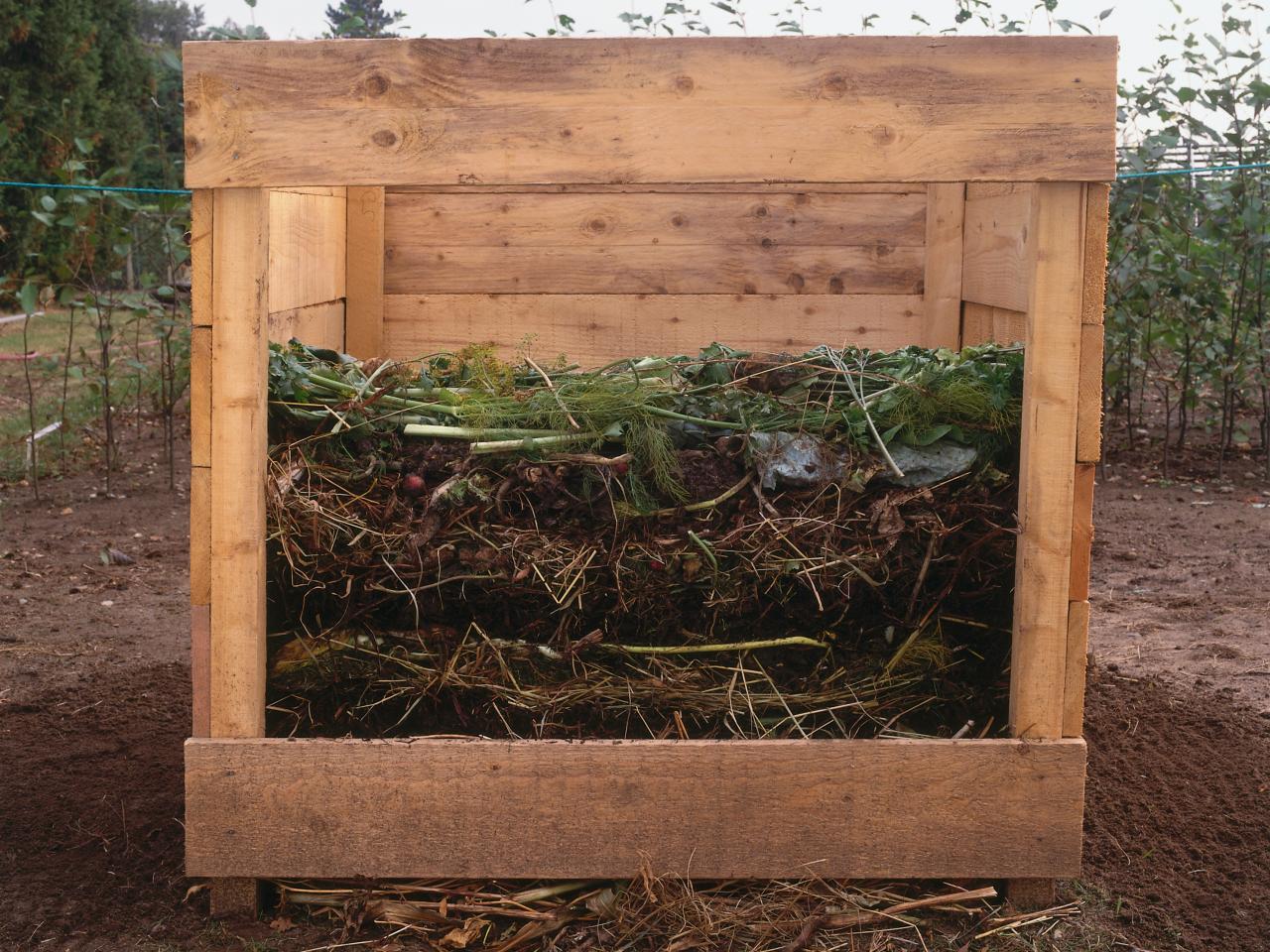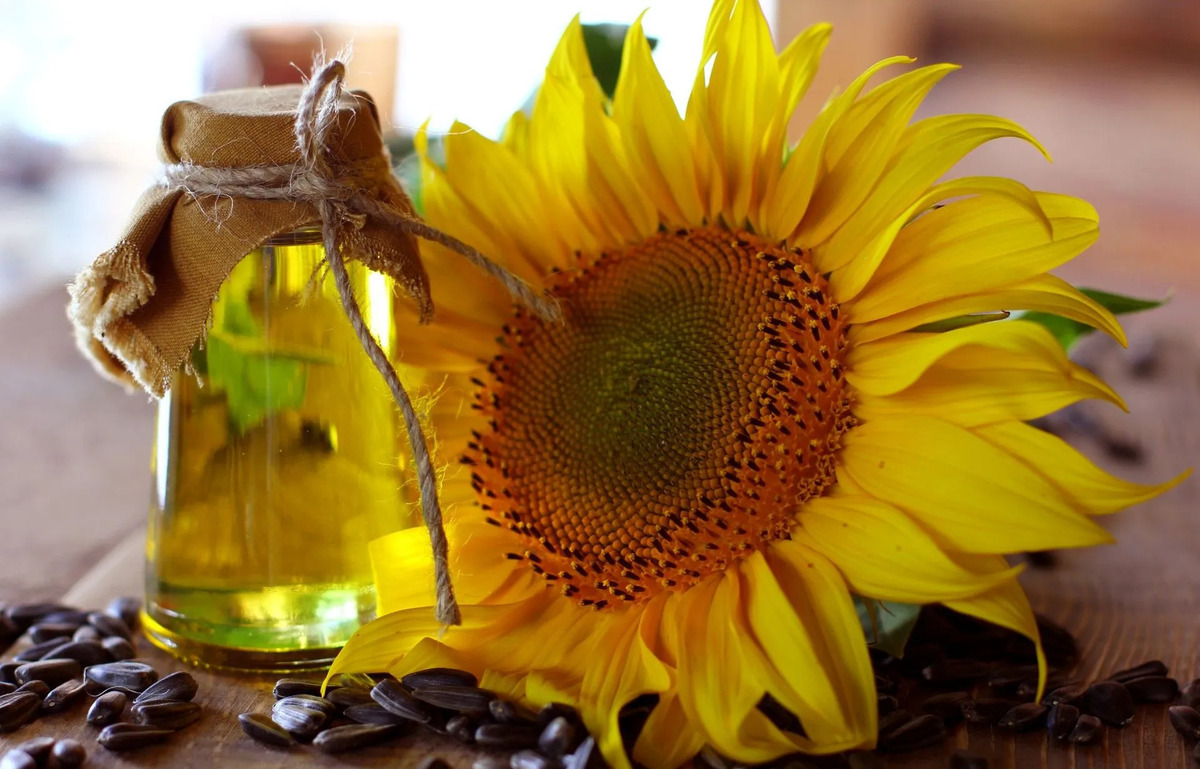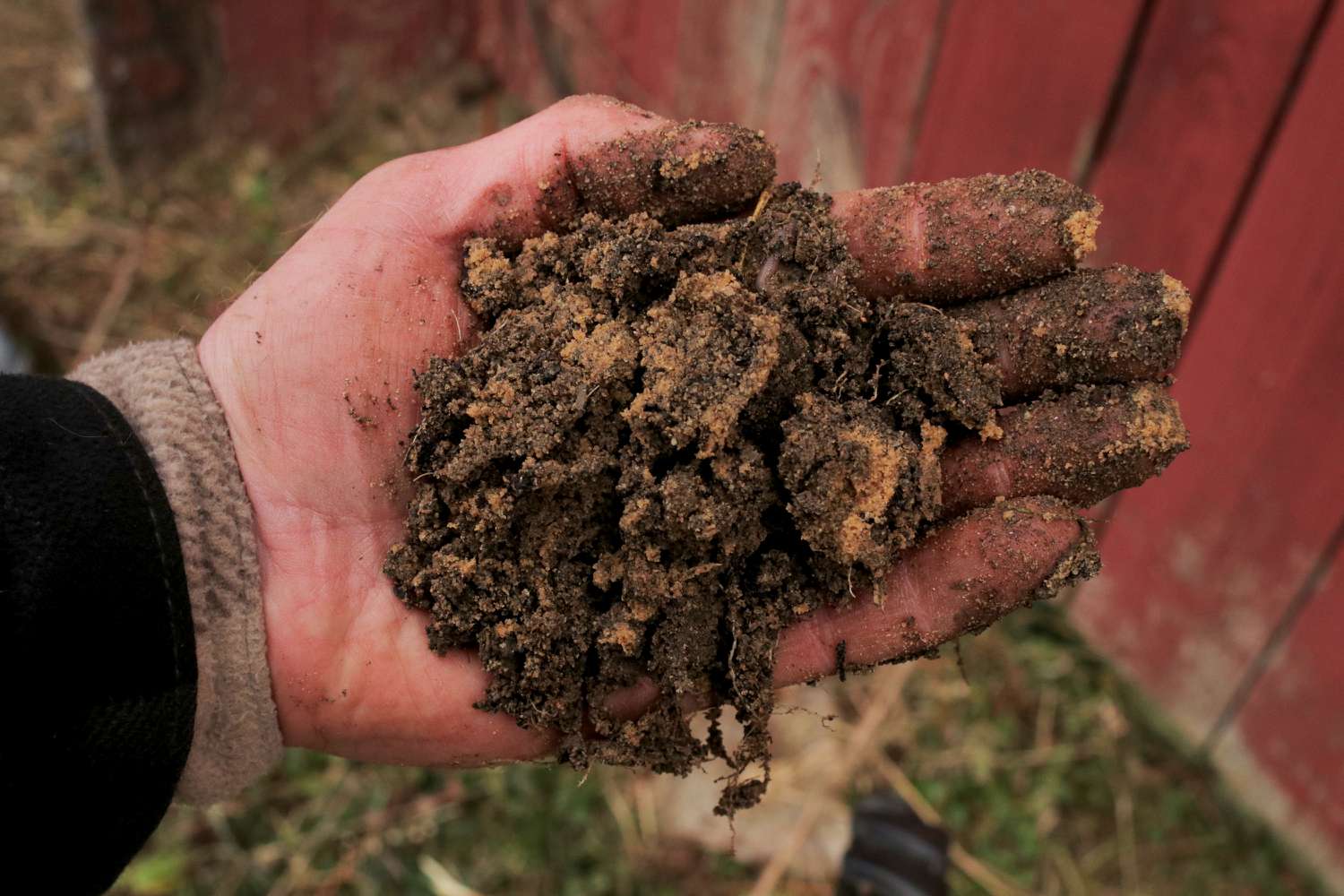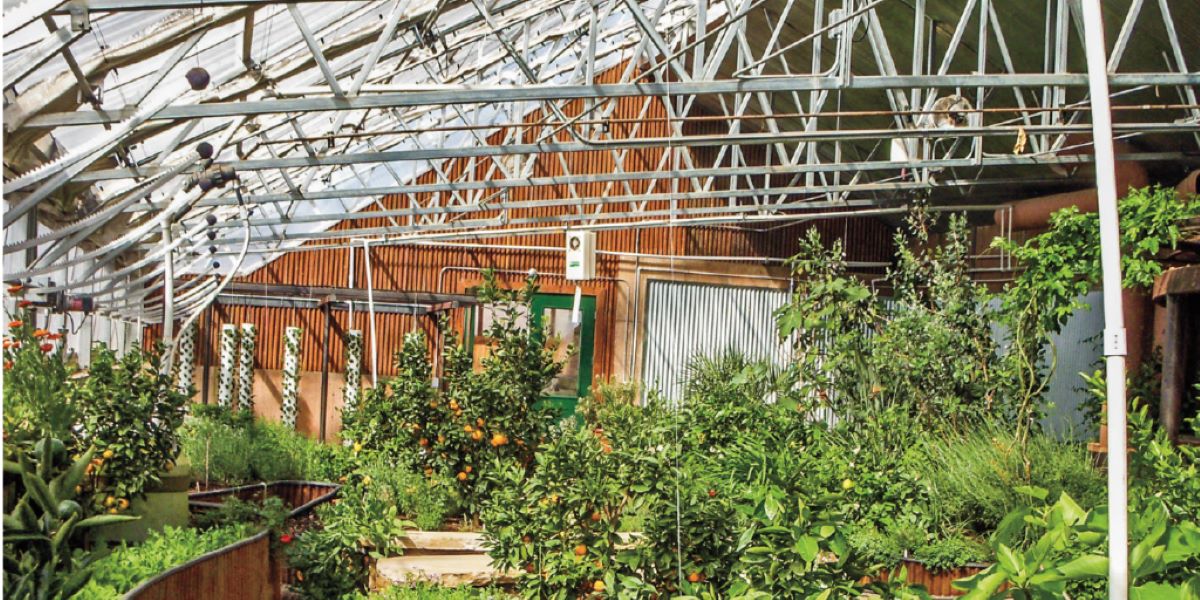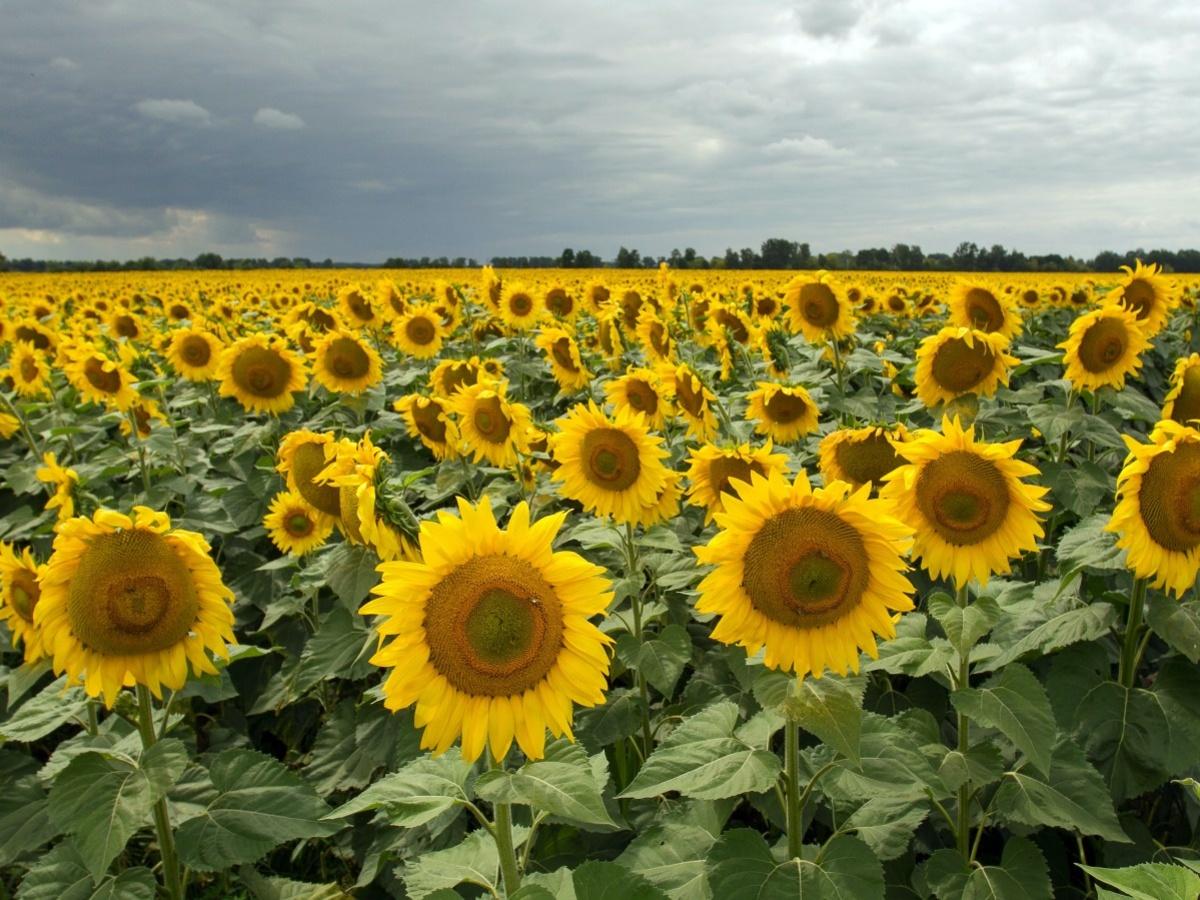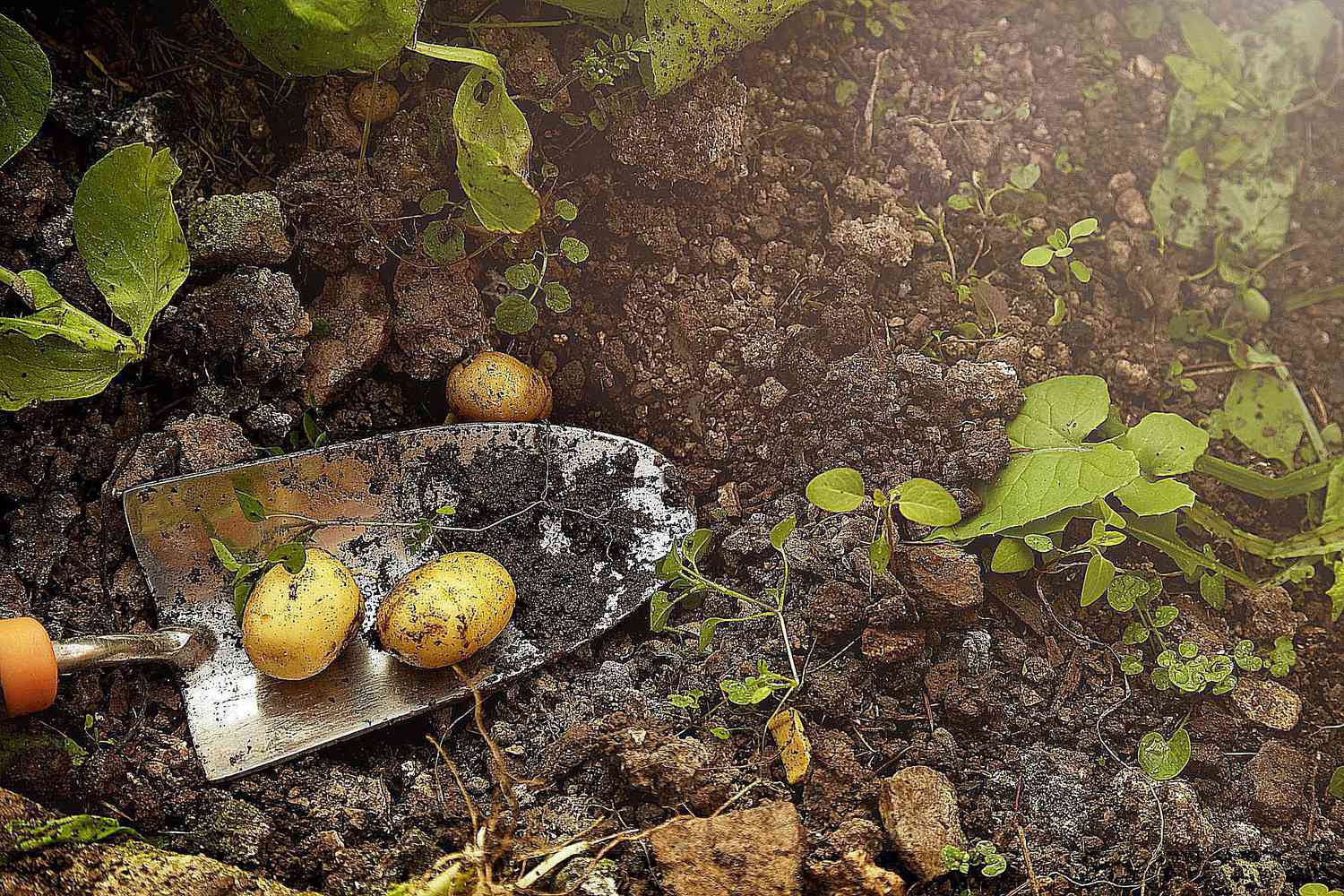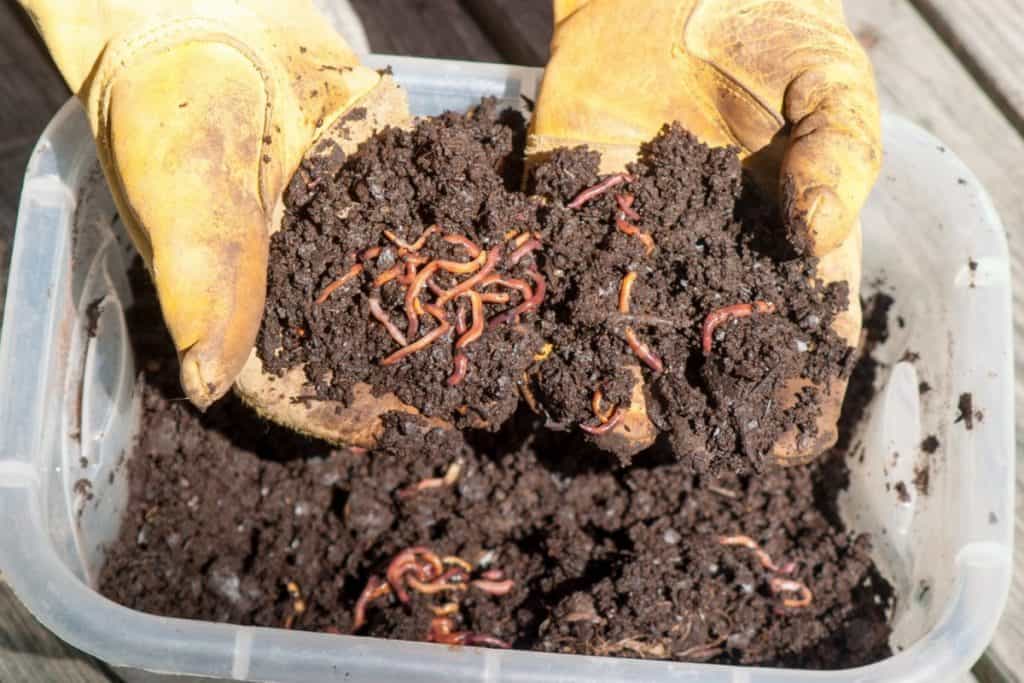Home>Gardening Tips and Tricks>Eco-Friendly Gardening>What Do You Do With Compost Waste
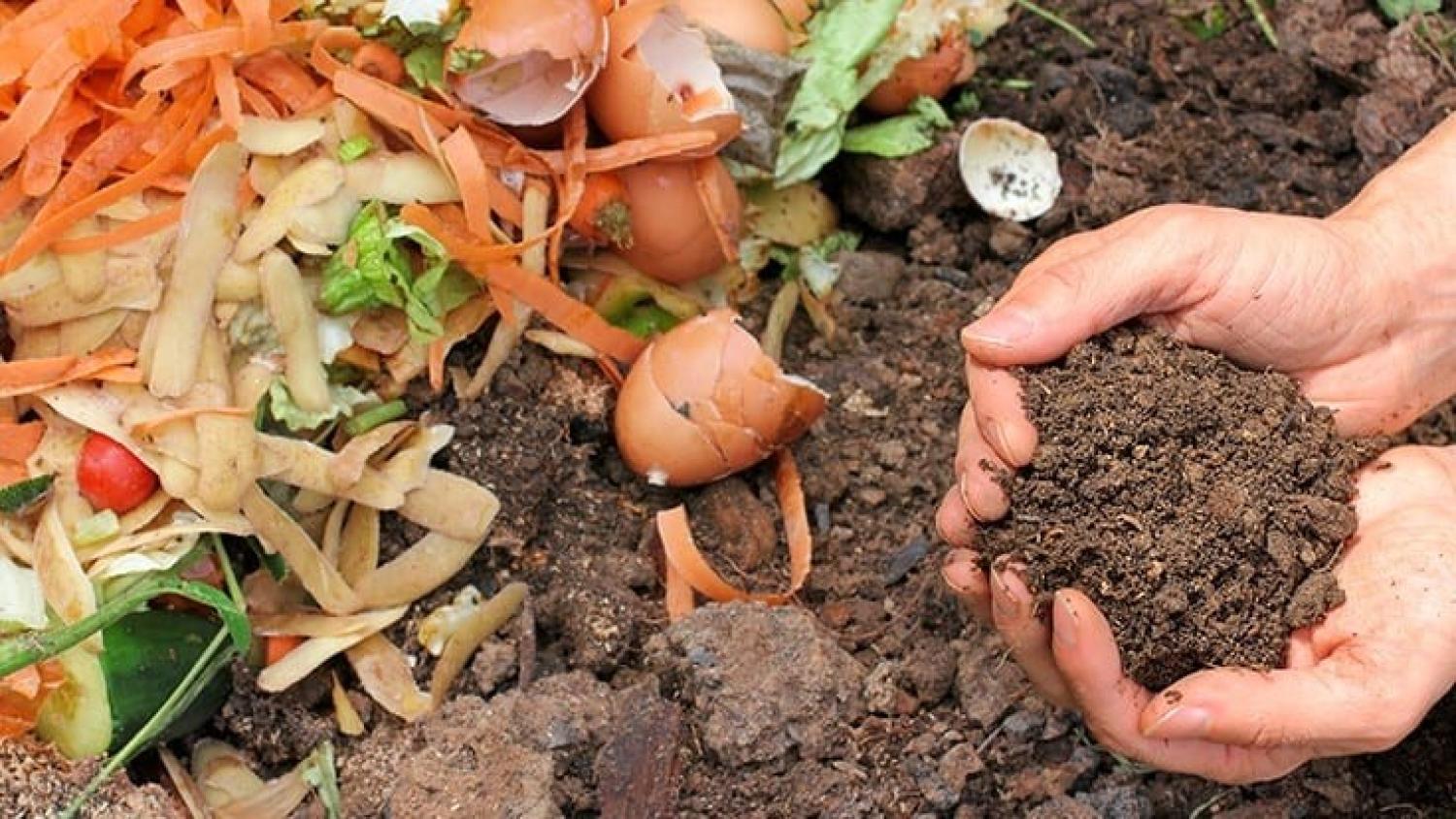

Eco-Friendly Gardening
What Do You Do With Compost Waste
Modified: January 22, 2024
Discover eco-friendly gardening tips and learn what to do with compost waste in this informative guide. Enhance your garden while reducing your ecological footprint.
(Many of the links in this article redirect to a specific reviewed product. Your purchase of these products through affiliate links helps to generate commission for Chicagolandgardening.com, at no extra cost. Learn more)
Table of Contents
- Introduction
- What is compost waste?
- Benefits of composting
- Types of compost waste
- Common sources of compost waste
- How to collect and store compost waste
- Methods of composting
- Using compost waste in your garden
- Compost waste for indoor plants
- Compost waste for agricultural purposes
- Composting safety and precautions
- Conclusion
Introduction
Welcome to the world of eco-friendly gardening! If you’re passionate about sustainability and taking care of the environment, then composting is a practice that you’ll want to embrace. Compost waste is a valuable resource that can be created from organic materials, and it is an essential component in promoting healthy and thriving gardens.
In this article, we will explore the concept of compost waste and its significance for gardeners. We will delve into the benefits of composting, the types and sources of compost waste, and how to collect and store it effectively. Additionally, we’ll discuss different methods of composting and how to utilize the resulting compost waste to enhance the growth of plants both indoors and outdoors.
Composting is a process that involves the decomposition of organic materials, such as fruit and vegetable scraps, yard waste, and coffee grounds, into nutrient-rich soil amendment. This natural process not only helps to reduce waste that would otherwise end up in landfills, but it also provides a sustainable and eco-friendly way to nourish your plants.
By incorporating compost waste into your gardening routine, you contribute to the health of your plants and the overall well-being of the environment. Compost waste acts as a fertilizer, enriching the soil with essential nutrients, improving its structure, and enhancing its water-holding capacity. It also promotes the growth of beneficial microorganisms, which aid in breaking down organic matter and preventing the occurrence of plant diseases.
Whether you have a small backyard garden, a balcony full of potted plants, or even a large agricultural plot, composting can benefit you in numerous ways. Not only will it reduce your reliance on synthetic fertilizers and chemical pesticides, but it will also help you create a sustainable and self-sufficient ecosystem in your garden.
In the following sections, we will guide you through the process of composting, from collecting and storing compost waste to utilizing it effectively in various gardening scenarios. So, let’s dive in and discover the wonders of compost waste and its immense potential for creating thriving and environmentally-friendly gardens!
What is compost waste?
Compost waste refers to the organic materials that are used in the process of composting. It consists of various biodegradable items, such as kitchen scraps, yard waste, and other organic matter that can be decomposed into nutrient-rich soil amendment. Composting is a natural process where microorganisms, such as bacteria and fungi, break down the organic materials into humus, a dark, crumbly substance that enhances soil fertility and supports plant growth.
This waste can include a wide range of materials, including fruit and vegetable scraps, coffee grounds, tea bags, eggshells, leaves, grass clippings, and small branches, among others. It is important to note that not all waste can be composted, as some materials may take a long time to break down or may release harmful substances into the compost. It is crucial to be mindful of what goes into your compost pile to ensure a healthy and successful composting process.
Compost waste is an incredibly valuable resource for gardeners. When properly composted, it becomes a nutrient-dense material that improves soil structure, enhances moisture retention, and provides the necessary elements for healthy plant growth. It is an excellent alternative to synthetic fertilizers, as it is natural, sustainable, and helps reduce waste that would otherwise end up in landfills.
The process of composting requires a balance of carbon-rich materials (often referred to as “browns”) and nitrogen-rich materials (known as “greens”). Browns include items like dry leaves, straw, and shredded paper, while greens consist of fresh grass clippings, kitchen scraps, and plant trimmings. By combining these materials in the right proportions and providing adequate moisture and aeration, the organic waste breaks down gradually and turns into nutrient-rich compost.
Compost waste is not only beneficial for traditional gardens but also for container gardening, raised beds, and even indoor plants. It helps create a thriving ecosystem in which plants can access essential nutrients, develop strong root systems, and grow vigorously. Composting not only benefits the plants but also improves the overall soil health and sustainability of your garden.
Now that we have a better understanding of what compost waste is and why it is valuable, let’s explore the numerous benefits of composting in the next section.
Benefits of composting
Composting offers a plethora of benefits for both the environment and gardeners. Let’s explore some of the key advantages of incorporating composting into your gardening practices:
- Natural fertilizer: Compost waste is a natural and nutrient-rich fertilizer that provides a balanced blend of essential nutrients to plants. Unlike synthetic fertilizers, which can harm the environment and disrupt the delicate ecological balance, compost promotes healthy plant growth without the risk of chemical runoff or groundwater contamination.
- Improves soil structure: Compost enhances the physical properties of soil, improving its texture, water retention capacity, and aeration. It helps loosen compacted soil, allowing roots to penetrate more easily and access water and nutrients. Well-structured soil also aids in preventing erosion and increasing the overall resilience of your garden.
- Reduces waste: Composting diverts organic waste from landfills, where it would generate harmful greenhouse gases like methane. By composting food scraps, yard trimmings, and other organic materials, you can minimize your environmental impact and contribute to the reduction of waste in your community.
- Suppresses plant diseases: Compost contains beneficial microorganisms that compete with harmful pathogens, suppressing the occurrence of plant diseases. These microorganisms aid in breaking down organic matter and converting it into accessible nutrients for plants, creating a thriving and disease-resistant garden environment.
- Conserves water: Compost improves the water-holding capacity of soil, reducing the need for frequent watering. The organic matter in compost helps retain moisture, preventing excessive evaporation and ensuring that plants have a steady supply of water, even during dry periods.
- Encourages biodiversity: Composting fosters the growth of beneficial organisms, such as worms, insects, and soil-dwelling microorganisms, which contribute to the overall biodiversity of your garden. These organisms help break down organic matter, improve soil fertility, and create a healthy and well-balanced ecosystem.
- Sustainable gardening: By composting, you embrace a more sustainable approach to gardening. Utilizing compost waste reduces the need for synthetic fertilizers and pesticides, minimizing the negative impact on the environment. It promotes a natural and self-sufficient gardening system that is in harmony with nature.
These are just a few of the many benefits that composting offers. From enriching the soil to reducing waste and promoting sustainable gardening practices, composting is a valuable tool for any eco-friendly gardener. In the next section, we will explore the types and sources of compost waste, helping you understand what materials are suitable for composting.
Types of compost waste
Compost waste can be categorized into two main types: green waste and brown waste. These materials provide the necessary carbon and nitrogen balance required for effective composting. Let’s take a closer look at each type:
- Green waste: Green waste, also referred to as nitrogen-rich materials, includes items such as fresh grass clippings, kitchen scraps, coffee grounds, tea leaves, and plant trimmings. These materials are generally moist and contain higher levels of nitrogen, which accelerates the decomposition process. Green waste adds vital nutrients and moisture to the compost pile, ensuring a fertile environment for microorganisms and speeding up the breakdown of organic matter.
- Brown waste: Brown waste, also known as carbon-rich materials, consists of dry leaves, straw, shredded paper, cardboard, and wood chips. These materials are drier and contain higher levels of carbon, which helps to balance the nitrogen-rich green waste. Brown waste provides structure and absorbs excess moisture in the compost pile, preventing it from becoming compacted or waterlogged. It also aids in creating airflow within the pile, facilitating the decomposition process.
It’s important to maintain a proper balance between green waste and brown waste when composting. A recommended ratio is roughly three parts brown waste to one part green waste. This balance ensures that the compost pile decomposes effectively without becoming too wet or too dry.
Additionally, there are some materials that are not suitable for composting due to various reasons, such as potential toxins, slow decomposition, or the risk of attracting pests. These materials include meat, dairy products, oily food waste, pet waste, weeds with mature seeds, and treated wood products. It’s best to avoid adding these items to your compost pile to ensure a safe and healthy composting process.
Now that we have a better understanding of the types of compost waste, let’s explore the common sources from which we can collect these materials in the next section.
Common sources of compost waste
Compost waste can be sourced from various places and everyday activities. By identifying these common sources, you can easily obtain the materials needed to create nutrient-rich compost for your garden. Let’s explore some of the most common sources of compost waste:
- Kitchen scraps: The kitchen is a prime source of compostable waste. Fruit and vegetable scraps, coffee grounds, tea bags, eggshells, and even paper towels can be collected and added to your compost pile. Just be sure to avoid including meat, dairy products, and oily food waste, as they can attract pests and slow down the composting process.
- Yard waste: Your yard and garden provide ample compostable materials. Grass clippings, leaves, small branches, and plant trimmings are excellent sources of green waste. Be mindful not to include diseased or pest-infested plants, as they can transfer pathogens or pests to your compost pile.
- Shredded paper and cardboard: Paper waste, such as newspaper, office paper, and cardboard, can be shredded and added to your compost. These materials provide carbon for your compost pile and help maintain a good carbon-to-nitrogen ratio. Avoid using papers with colored ink or glossy coatings, as they may contain toxins that can harm your compost.
- Wood chips and sawdust: If you have access to wood chips or sawdust from woodworking or tree pruning, they can be valuable additions to your compost pile. However, they should be used in moderation, as they are carbon-rich materials that decompose slowly. Mixing them with nitrogen-rich materials will help balance the compost pile.
- Farm or stable waste: If you live near a farm or have access to stable waste, such as straw, hay, or animal manure from herbivores, these can be fantastic sources of compost material. Animal manure adds valuable nitrogen, while straw or hay provides carbon. However, ensure that the manure has been aged or composted properly to avoid introducing weed seeds or harmful pathogens to your compost pile.
These are just a few examples of common sources of compost waste, but the possibilities are almost endless. It’s important to remember that the quality of your compost relies on the quality of the materials used. Choosing organic and chemical-free waste materials will ensure that your compost is free from any potentially harmful substances.
Now that we know where to find compostable materials, let’s move on to the next section, where we’ll discuss how to collect and store compost waste effectively.
How to collect and store compost waste
Collecting and storing compost waste properly is vital for a successful composting process. Here are some guidelines to help you effectively gather and store compostable materials:
- Kitchen collection: Keep a designated container in your kitchen, such as a countertop compost bin or a lidded bucket, to collect kitchen scraps. This makes it convenient to collect fruit and vegetable peels, coffee grounds, and other food waste as you prepare meals. Line the container with a compostable liner or use newspaper to prevent odors and make it easy to transfer the contents to your outdoor compost pile.
- Yard waste collection: Set up a designated area or bin in your yard for collecting yard waste. This can be a simple pile or a compost bin specifically designed for outdoor composting. As you mow the lawn, rake leaves, or trim plants, add these materials to the designated area. Be sure to mix green and brown waste to maintain the required balance for effective decomposition.
- Proper storage: It’s important to store your compost waste properly to avoid attracting pests and to prevent the materials from decomposing prematurely. If you have limited space or prefer a more contained system, consider using a compost tumbler or a compost bin with a locking lid. These options provide ventilation, retain heat, and help keep unwanted critters at bay.
- Keep it covered: To prevent odors and minimize the likelihood of attracting pests, cover your compost containers or bins with a lid or a breathable cover. This will help maintain a controlled environment and discourage unwanted animals from scavenging in your compost pile.
- Compostable liners: When collecting kitchen scraps, consider using compostable liners made from materials like plant starch or paper. These liners can withstand moisture and break down along with the compost, reducing plastic waste in the process. If using newspaper as a liner, simply turn it into the compost pile when emptying the container.
- Empty regularly: Empty your kitchen compost container into your outdoor compost pile or bin regularly to maintain a clean and odor-free collection system. It’s best to empty it at least once a week or more frequently if needed. Mixing kitchen scraps with yard waste will help maintain a balanced compost pile.
By following these guidelines, you can effectively collect and store compost waste, ensuring that you have a steady supply of material for your composting endeavor. The next step is to choose the composting method that suits your needs and preferences, which we will explore in the next section.
Methods of composting
There are several methods of composting, each with its own advantages and considerations. The choice of method depends on factors such as available space, time commitment, and the materials you have on hand. Let’s explore some common methods of composting:
- Backyard composting: This is the most traditional and widely-used method of composting. It involves creating a compost pile directly in your backyard or in a designated compost bin. The pile is built by layering green and brown waste, ensuring a balance of carbon and nitrogen. Regular turning or mixing helps aerate the pile and speed up the decomposition process. Backyard composting is versatile and suitable for those with ample space, allowing for larger volumes of compost waste.
- Compost tumblers: Compost tumblers are enclosed bins that can be easily rotated or turned. They provide a convenient option for composting with minimal effort. By rotating the tumbler periodically, you can aerate the contents and expedite the decomposition process. Compost tumblers are ideal for individuals with limited space or those who prefer a more contained and manageable composting system.
- Vermicomposting: Vermicomposting involves the use of worms to break down organic materials. Worm bins, also known as vermicompost bins, are filled with bedding material, such as shredded newspaper or coconut coir, and a population of composting worms, such as red wrigglers. These worms consume the organic waste, turning it into nutrient-rich worm castings. Vermicomposting is an excellent option for those with limited outdoor space or who prefer indoor composting.
- Bokashi composting: Bokashi composting is a fermentation process that utilizes beneficial microorganisms to break down organic waste. In this method, a special bokashi composting system, often consisting of airtight containers, is used. Organic waste is layered with bokashi bran, which contains a mix of beneficial bacteria and fungi. The waste ferments over a few weeks, creating a fermented pre-compost that can be buried or added to a traditional compost pile to complete the decomposition process.
- Community composting: Community composting is a collective effort where a group of individuals or a community comes together to compost their organic waste. This can be done through shared compost bins or community gardens. Community composting encourages the exchange of knowledge and resources, reduces individual burdens, and promotes a sense of community and sustainability.
Each composting method has its own unique benefits and considerations. It’s important to choose a method that aligns with your specific needs, available space, and resources. Whichever method you choose, the key to successful composting is maintaining the right balance of carbon and nitrogen, providing adequate moisture and aeration, and regularly turning or mixing the compost pile to facilitate decomposition.
Now that we have explored different composting methods, let’s move on to the exciting part: utilizing compost waste in your garden to nurture and enhance your plants.
Using compost waste in your garden
Compost waste is a valuable resource that can significantly improve the health and vitality of your garden. When used correctly, it provides essential nutrients, improves soil structure, and enhances overall plant growth and productivity. Here are some ways to effectively utilize compost waste in your garden:
- Soil amendment: One of the primary uses of compost waste is as a soil amendment. It enriches the soil with organic matter, providing valuable nutrients to plants. By incorporating compost into your garden beds or mixing it with potting soil for container plants, you create a nutrient-rich environment that supports healthy root development and overall plant growth.
- Topdressing: Apply a layer of compost waste on the top surface of your garden soil or around existing plants. This acts as a protective mulch that helps retain moisture, suppress weed growth, and gradually releases nutrients into the soil as it decomposes. Topdressing with compost also improves the soil’s ability to absorb and retain water, reducing the need for frequent watering and promoting healthier plants.
- Seed starting and transplanting: Compost can be mixed with potting soil or used as a seed starting medium. Its nutrient-rich properties provide an ideal environment for seeds to germinate and young seedlings to thrive. When transplanting seedlings, mixing compost with the soil in the planting hole helps establish strong root systems and provides a nutrient boost to support healthy growth.
- Compost tea: Compost tea is a liquid fertilizer made by soaking compost in water. The resulting liquid is rich in beneficial microorganisms and nutrients. Use compost tea as a foliar spray or soil drench to provide plants with a boost of nutrients and promote healthy microbial activity in the soil.
- Plant disease prevention: Compost waste contains beneficial microorganisms that can help suppress plant diseases. Applying compost to your garden beds and around the base of plants can help create a healthy and disease-resistant environment. The microorganisms in the compost outcompete harmful pathogens, reducing the risk of plant infections.
When using compost waste in your garden, it’s essential to consider the quality and maturity of the compost. Well-composted material that has decomposed fully will provide the highest nutritional value and ensure that there are no weed seeds or pathogens present.
Remember to distribute compost evenly throughout your garden and follow the specific needs of different plants. Some plants may benefit from a higher concentration of compost, while others may require a more balanced approach. Regularly incorporating compost waste into your gardening routine will help maintain soil fertility, improve plant health, and promote a sustainable and thriving garden.
In the next section, we’ll explore how compost waste can be used for indoor plants, bringing the benefits of composting to your home.
Compost waste for indoor plants
Compost waste is not just limited to outdoor gardens; it can also be utilized to benefit indoor plants. Whether you have a small collection of houseplants or a full-fledged indoor garden, incorporating compost waste can provide numerous advantages. Here’s how you can use compost waste for indoor plants:
- Potting mix: When repotting indoor plants or creating a new potting mix, adding compost to the soil mixture can improve its fertility and nutrient content. Compost enhances moisture retention, promotes root development, and provides a steady supply of nutrients for healthy indoor plant growth.
- Compost tea: Indoor plants can benefit from the use of compost tea as a natural fertilizer. Use compost and water to create a compost tea mixture, then use it to water your indoor plants. This will provide a gentle, nutrient-rich boost and encourage vibrant growth.
- Topdressing: Sprinkling a fine layer of compost on top of the soil in indoor plant pots acts as a natural mulch. This helps retain moisture, suppresses weed growth, and gradually releases nutrients into the soil. It also improves the aesthetic appeal of potted plants.
- Compost as a soil amendment: If you have the space, consider incorporating a small amount of compost waste into the potting soil of your indoor plants. This will enrich the soil with organic matter, improve nutrient availability, and create a healthier environment for your plants to thrive.
- Composting houseplant waste: Indoor plant trimmings, fallen leaves, and other organic materials from houseplants can be collected and composted. This not only reduces waste but also provides an additional source of compost waste for your indoor and outdoor plants. Ensure that the composting process is carried out in a well-ventilated area or consider using a small compost bin specifically for indoor plant waste.
When using compost for indoor plants, it’s important to ensure that the compost is well matured and free from pests or diseases. Additionally, be mindful of the specific light, water, and nutrient requirements of your indoor plants, using compost as a supplement rather than the sole source of nutrition.
By incorporating compost waste into your indoor gardening routine, you create a sustainable and organic approach to plant care. The natural nutrients and beneficial microorganisms in compost contribute to strong and healthy indoor plants, while also reducing waste and promoting a greener lifestyle.
In the next section, we’ll explore how compost waste can be used for agricultural purposes, highlighting its benefits for larger-scale farming and gardening.
Compost waste for agricultural purposes
Compost waste holds tremendous value in agricultural settings, providing numerous benefits for larger-scale farming and gardening. Its ability to enrich the soil, enhance crop productivity, and promote sustainable agriculture makes it a valuable resource for farmers. Here’s how compost waste can be used for agricultural purposes:
- Soil fertility and structure: Incorporating compost waste into agricultural soil improves its fertility and structure. Compost adds essential nutrients, enhances moisture retention, and promotes a healthy microbial population. This leads to improved soil health, increased nutrient availability, and enhanced crop growth.
- Organic matter and carbon sequestration: Composting waste materials helps increase soil organic matter content, which is crucial for soil health and carbon sequestration. Organic matter improves soil structure, water-holding capacity, and nutrient retention. Additionally, carbon sequestration in agricultural soil helps mitigate climate change by reducing atmospheric carbon dioxide levels.
- Reduced dependence on synthetic fertilizers: Compost waste provides a natural alternative to synthetic fertilizers, reducing the reliance on chemical inputs in agriculture. Compost releases nutrients slowly and steadily, ensuring a continuous supply of plant nutrients over a longer period. This not only supports crop growth but also reduces the risk of nutrient leaching and environmental pollution.
- Water management: Compost-amended soils have better water-holding capacity and infiltration rates, reducing water runoff and enhancing water-use efficiency. This is particularly important in areas prone to drought or limited water resources, as compost helps conserve water and maintain optimal soil moisture levels for crop growth.
- Suppression of plant diseases: Compost contains beneficial microorganisms that can help suppress plant diseases in agricultural systems. The presence of these microorganisms can compete with harmful pathogens, reducing the incidence of plant diseases and the need for chemical pesticides.
- Soil erosion control: The addition of compost to agricultural soils helps reduce soil erosion by improving soil structure and increasing vegetative cover. The organic matter in compost stabilizes soil aggregates, preventing erosion caused by water and wind.
- Improved crop yield and quality: The nutrient-rich composition of compost waste contributes to higher crop yields and improved crop quality. Essential nutrients provided by compost support healthy plant growth, increased fruit production, and enhanced flavor and nutritional content in crops.
The use of compost waste in agriculture promotes sustainable and environmentally-friendly farming practices. By utilizing this natural resource, farmers can reduce their environmental impact, improve soil quality, and enhance overall crop productivity.
Incorporating composting practices into agricultural systems not only supports the long-term sustainability of farming but also benefits the surrounding ecosystems and communities. The next section will discuss important composting safety measures and precautions to ensure a successful and safe composting experience.
Composting safety and precautions
While composting is a safe and beneficial practice, it’s important to take certain precautions to ensure a successful and healthy composting process. Here are some important safety measures and precautions to keep in mind:
- Avoid composting toxic materials: It’s crucial to avoid composting materials that contain toxins or may be harmful to humans, plants, or animals. This includes items such as chemically treated wood, diseased plants, pet waste, and synthetic chemicals. These materials may negatively impact the composting process and can harm the environment or pose health risks.
- Proper handling and storage: When collecting and handling compostable materials, wear gloves to protect your hands and wash them thoroughly afterward. Store compost bins or piles in an area that is easily accessible, well-ventilated, and away from sources of odors. Proper storage and handling reduce the risk of contamination and ensure a hygienic composting environment.
- Avoid attracting pests: To prevent attracting pests, such as rodents or insects, avoid adding food waste that may be enticing to them. Use a compost bin with a tight-fitting lid, or consider using a secure compost tumbler or an enclosed compost system. Regularly turning or aerating the compost pile also helps discourage pests from making a home in your compost.
- Composting hygiene: Practice good hygiene when handling compost waste. Wash your hands thoroughly after handling compost or wear gloves to minimize the risk of potential pathogens. Avoid touching your face or mouth while working with compost, and clean any tools or utensils used for composting to prevent cross-contamination.
- Maintain proper moisture levels: Avoid allowing the compost pile to become too dry or too wet. Excess moisture can lead to odor issues and promote the growth of anaerobic bacteria, while excessive dryness slows down the decomposition process. Aim for a moist, but not soggy, compost pile by periodically checking and adjusting the moisture levels as needed.
- Monitor temperature: Compost piles can generate heat as the materials decompose. While some heat is normal, excessively high temperatures can lead to fire hazards. Regularly monitor the temperature of your compost pile and maintain proper airflow and moisture to ensure that it remains within a safe range.
- Turn or mix the compost pile: Regularly turning or mixing the compost pile helps maintain proper aeration, discourages odor formation, and speeds up the decomposition process. However, be cautious when turning the pile to avoid strain or injury. Use appropriate tools and techniques to safely manage the compost pile.
Following these safety measures and precautions will help ensure a safe and successful composting experience. By maintaining a clean and hygienic composting environment, you can maximize the benefits of compost waste while minimizing any potential risks.
Now that we have explored the safety aspects of composting, let’s conclude this article with a recap of the valuable information we have covered regarding eco-friendly gardening practices and the utilization of compost waste.
Conclusion
Embracing eco-friendly gardening practices and incorporating compost waste into your gardening routine is a powerful way to nurture a healthier, more sustainable environment. Composting offers numerous benefits, including improved soil fertility, enhanced plant growth, reduced waste, and the promotion of biodiversity. By diverting organic materials from landfills, composting helps mitigate climate change by reducing greenhouse gas emissions and conserving resources.
We explored various aspects of composting, starting with the definition of compost waste and its significance. Understanding the types and sources of compost waste allows us to identify suitable materials for composting effectively. We then delved into the methods of composting, ranging from backyard composting and vermicomposting to bokashi composting and community composting.
Compost waste can be utilized in a multitude of ways, such as soil amendment, topdressing, and compost tea, to benefit both outdoor and indoor plants. Whether you have a small balcony garden, a bountiful vegetable patch, or acres of agricultural land, compost waste provides the necessary nutrients, improves soil structure, and enhances overall plant health and productivity.
While composting is generally safe, it is essential to follow safety precautions, such as avoiding toxic materials, practicing good hygiene, and properly managing compost moisture and temperature. By adhering to these precautions, we can ensure a successful and safe composting experience while minimizing environmental risks.
By incorporating these sustainable gardening practices and actively participating in composting, we contribute to the overall well-being of our gardens, our communities, and the planet. We reduce our reliance on harmful synthetic fertilizers and pesticides, improve soil health, conserve water, and promote a more self-sufficient and regenerative approach to gardening and farming.
So, let’s embrace the transformative power of compost waste and make eco-friendly gardening a part of our daily lives. Together, we can create thriving gardens, foster a healthier planet, and inspire others to join us on this enriching journey towards sustainability.
